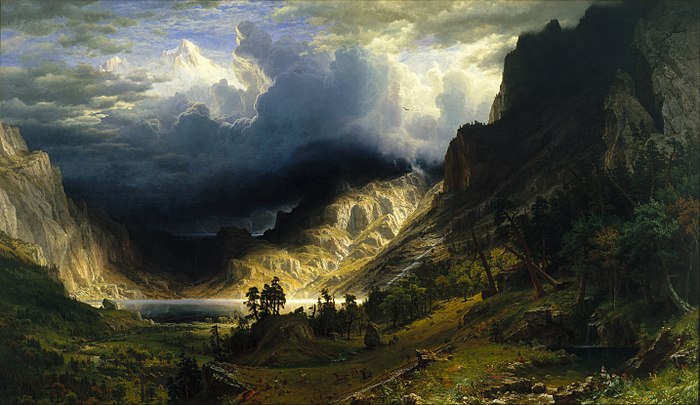
“Writing about the self doesn’t have to come ‘at the expense’ of other perspectives or other modes of inquiry.”
Objects of Leslie Jamison’s Obsession:
The Act of Revision
Albert Bierstadt’s painting A Storm in the Rocky Mountains
The Impossibility of Documenting Everything
I first met Leslie Jamison the way most people do, through her byline, but I was a decade ahead of the rest of you. I read her short stories in the archives of our college literary magazine; she was, it will not surprise you to learn, already a legend. I even wrote an essay about one of her stories to join the staff. Eventually, I read my way through everything Leslie had written, and even tracked down her senior thesis, which I was told was about incest in William Faulkner, although really it was about siblings and intimacy and solipsism.
You might say that I was obsessed with Leslie Jamison, although of course saying that triggers an avalanche of assumptions that only Leslie herself could tease out. The great joy of becoming Leslie’s friend is following along as she does this kind of teasing: the nature of love and exes over ramen and seltzer with Emergen-C; the ideas of charity and confession while stacking non-dairy creamers at a midnight diner; the art of the essay for a group of eager, bleary-eyed college students or the capitalist roots of dating in front of a whole auditorium full of people. I’ve followed along, too, as everyone else has these last ten years as Leslie does this kind of work in essay after essay that helps us all make sense of the world and our place in it.
Sometimes a book has a heart that’s a character, like Isabel Archer in Portrait of a Lady, or a setting, like Brideshead in Brideshead Revisited, but Leslie’s new book, Make It Scream, Make It Burn, has a heart that’s an idea: obsession. There are the lonely souls obsessed with a specific whale in “52 Blue.” There are the hundreds of thousands of people living through digital personas in “Sim Life.” There are the artists obsessed with the possibility of verisimilitude, such as the writer James Agee in the title essay and the photographer Annie Appel in “Maximum Exposure.” And then, of course, there’s Leslie herself, obsessed with empathy and subjectivity, ethics and honesty, health and wellness, and many other subjects in the last third of this new collection where she focuses more on her private life. Because I’ve known Leslie for so many years, I know how much she can do with a tiny prompt, so I’ve opted to...
You have reached your article limit
Sign up for a digital subscription and continue reading all new issues, plus our entire archives, for just $1.50/month.
Already a subscriber? Sign in




